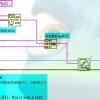Calculating size of cluster with cast fails, using flatten adds unwanted data
-
Similar Content
-
Potential memory corruption when (de-)serializing Sets in LabVIEW 2019 SP1 f3 (32-bit)
By LogMAN,
- flatten to string
- crash
- (and 1 more)
- 4 replies
- 4,895 views
-
Prototype of my Serialization library now available (JSON, XML, your favorite format...)
By Aristos Queue,
- serialization
- object persistence
- (and 2 more)
- 7 replies
- 6,368 views
-



Recommended Posts
Join the conversation
You can post now and register later. If you have an account, sign in now to post with your account.